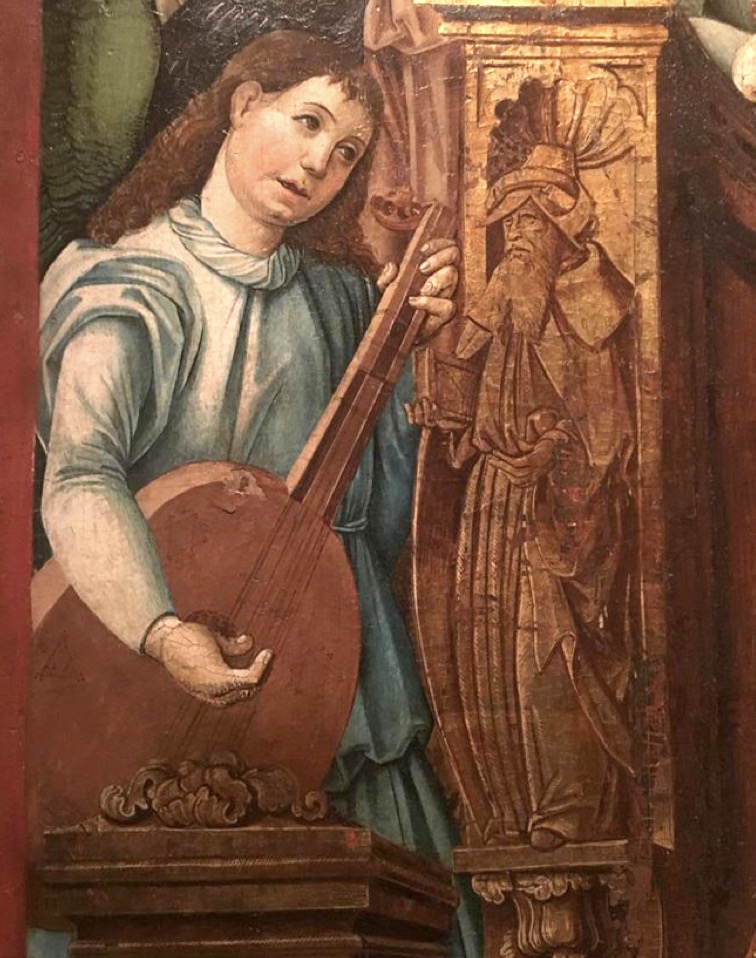Contrabass-vihuela. Detail from an early 16th century Catalan (Spanish) painting, "St. Vincent enthroned with music making angels", by the Master of Javierre or Maestro de Ager.
Lleida: Museo Diocesano.
instrument: vihuela de mano | century: 16cent/1/early | catalogue nº: 16-137a

Artwork
Creator Maestro de Javierre
Medium Artwork: Painting
Location
City Lérida | Region Catalonia | Old kingdom Aragon
Characteristics
| Body Oval | Strings 4 courses | Neck Short | Pegbox Sickle |
| Bridge Fixed | Frets Yes | Back Flat | Pegs Lateral |
| Technique Plucked fingers equal p+i |
Commentary
ARTWORK
Painting is located in the Museo Diocesano, Lleida (Lérida).
In the description of this painting on the webste “Via Vicentius Valentius —Via Romana” http://viavicentius.blogspot.com.au/2012/08/la-tabla-de-san-vicente-martir-de-ager.html [accessed 08/01/14] this painting is described in the following words:
It is a tempera painting on wood that historiography had attributed to the anonymous "Master of Javierre", so called because he was the author of the altarpiece in the church of Javierre (Huesca). Lately the painter Francesc Baget, known as the "Master of Ager", has been proposed as the author of the panel of Saint Vincent, who was a disciple of Juan de la Abadía el Viejo. The attributes of the dalmatic, martyr's palm and millstone, typical of Saint Vincent, stand out in the work. But we are undoubtedly struck by the fact that this work represents interesting musical instruments of the period and the musical angels who carry them give it even more value. It has been in the Diocesan Museum of Solsona since 1929, originating from the parish church of San José de Fondepou, which in turn originated from the parish church of San Vicente de Ager.”
INSTRUMENT
A large seemingly flat-backed instruments, possibly a bass vihuela. Tjhe only visible parts of the body show a circular soundhole with a carved beneath the players’ right hand, four feint stars of David designs on the soundboard, perhaps suggestive of inlays, and the bass end of a flat bridge. The fingerboard is made from six alternating strips of light and dark wood, and has seven tied frets. The pegbox is small and sickle-shaped with the pegs inserted laterally from both sides. It is difficult to assess the exact number of strings, although it seems to have four double courses or three double and one single course. Four pegs can be seen on the bass side of the pegbox.
ILLUSTRATION
from goodwin2017
Reproductions
https://commons.wikimedia.org/wiki/File:Vihuela-contrabass_Catalan.jpg